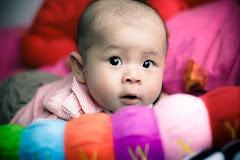
when we were growing up in the kampong, we did a lot of cruel things which could have landed us in trouble with the law today and which would definitely incur the wrath of animal lovers. many a 'harmful' animals died in our hands and even not harmful ones like dogs and cats were not spared from our merciless acts.
the dogs in the kampong could hardly finish their mating act in peace. whenever they were joined, we would do everything and anything to put them asunder. we hit them with sticks and hurled stones at them. when this did not work, we got hot water and poured it on them, specifically, onto where the genitals were. cats were luckier, they were not abused in the same violent way but when the mother gave birth, sometimes the kindles were abandoned.
rats caught in cages were either scalded alive or drowned in the drain or by submerging the cage in a pail of water. mice were caught with the mouse-trap where they did not usually have a chance to survive. the grown-ups, especially men, ate new-born mice wrapped in preserved mustard (kiam chye). birds were either injured, maimed or killed by stones propelled from a catapult (the malay name for it is lastik) which is featured in this blogpost.
cockcroaches and lizards, which we rarely see nowadays, were all over the place. cockroaches were crushed or slammed with slippers or whatever we could lay our hands on. a lot of people, including grown-up men, were scared of cockroaches but that did not prevent people from trying to exterminate them. lizards were more difficult to catch but when caught, they were often burnt to death. often only their wriggling tails seemed to survive for sometime.
but i think one of the most abhorred creatures was the toad. we were led to believe that the toad was a poisonous animal, so we learnt to hate it like poison. being ugly did not help the toad at all. whenever one was spotted, it would be savagely attacked with stones or sticks as we wanted to keep our distance from the poison. we were actually scared when the toad puffed up because we feared that it would expel its poison.
incidentally, i did not come across a frog, the edible kind, all the years when i was living in a kampong. the first time i saw a frog in the wild happened only recently, about 5 years ago, at a run-off canal at the macritchie reservoir. would we have attacked a frog if we had seen one?
of course, i did not do all those things that i have mentioned. i can count cockroaches, lizards, rats and toads as having died by my hands.
























